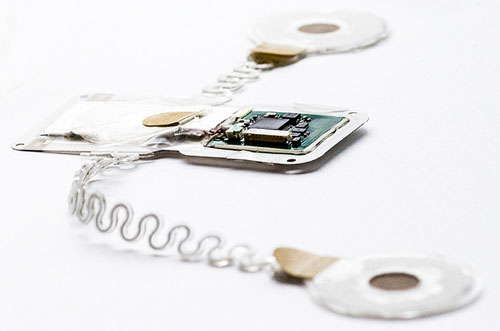| Posted: Jan 18, 2016 | |
What if ... we had radar that recognized us from the way we walk? |
|
| (Nanowerk Spotlight) The future Internet of Things (IoT), with its intuitive applications, will operate based on an broad stream of data supplied by sensors placed everywhere. These will be sensors that are many times smarter and more sensitive than the ones we have today. They will also be produced and installed in far greater numbers and be much cheaper than they are now. | |
| One example of such a sensor is a radar, a simplified version of which is already used in high-end automobiles to enable the vehicle to take over a number of tasks from the driver. | |
| Current radar sensors still much resemble the radars that are used to regulate air and see traffic. They are mostly manufactured using specific SiGe (silicon-germanium) technology. The resulting sensors are rather large and expensive, which makes them unsuited for unobtrusive integration into applications such as self-driving cars or drones. | |
| At imec we develop radar chips based on CMOS technology. Ultimately, our aim is to arrive at a compact radar-on-chip, a chip that offers far greater performance at a much lower power consumption than is the case at the moment – plus we want to incorporate a number of additional features and capabilities. For example, over time, we envisage a radar that is capable of distinguishing pedestrians from cyclists. That technology might even allow to identify individuals from the way they walk. Making that radar, based on we already have developed today is our challenge for the years ahead. | |
 |
|
| Prototype of a flexible health patch weighing just 10g – half the weight of current products. The patch uses real-time electrocardiogram (ECG), tissue-contact impedance and accelerometer information to accurately monitor physical activity. (© imec) | |
| Over the past three years we have been working on the building blocks for just such a radar-on-chip in 28 nm CMOS technology. So far we have developed an effective 79GHz transceiver, which in 2015 we also integrated with antennas on a micro-PCB. The result is a fairly complete radar system measuring just a few square centimeters. | |
| The next step in our program is to make those building blocks even better, with additional features and an even better resolution. And at a system level, we plan to develop applications that far exceed the capabilities of today’s radars. | |
| One of the ways to make our radar sensor smaller and more sensitive is to work with an even higher signal frequency. Which is why, in 2016, we will start to develop the building blocks for a 140GHz radar. We will be using even smaller antennas integrated onto the chip itself, resulting in an enhanced Doppler resolution and a better depth resolution. | |
| In parallel, we are implementing smart signal processing for 79GHz and 140GHz systems. The reflected signal received by our radar not only contains information about the position of the objects around the radar, but also about their movements. This “micro-Doppler” information makes it possible to distinguish pedestrians from runners, cyclists or animals. It might eventually even be used to distinguish individuals from one another. So, for instance, a car would be able to identify its driver and allow access based on the radar information. | |
| To make this micro-Doppler information accessible, we will deploy algorithms for pattern recognition and automatic learning, algorithms that are currently used in image processing. With these our radar will learn to recognize and distinguish the micro-Doppler signature of individual objects. In a subsequent stage, we will then combine the signals of multiple radars to create a full 360-degree image of what is going on around the car. | |
| And finally, to make the picture more complete and even smarter, our aim is to combine the radar information with that of other applications such as cameras or ultrasonic sensors. Each type of sensor has a field of application for which it supplies unique information, and image sensors are typically better at recognizing markings on the road or traffic signs. This “sensor fusion” is what we ultimately want to arrive at. | |
|
By Wim Van Thillo. He is program director for Perceptive Systems at imec. Wim received the M.S. degree in electrical engineering from the KU Leuven in 2005, and a PhD degree in engineering from the same university in 2010, after four years of research in imec’s wireless communications group. Wim was also visiting researcher at UC Berkeley’s Connectivity Lab. His research interests include digital signal processing and system design for millimeter-wave communication and sensing systems. Since January 2015 Wim is responsible for imec’s research in cellular and WiFi transceivers, 60 GHz communications, and 79 GHz and 140 GHz radar sensors.
|
|
|
Become a Spotlight guest author! Join our large and growing group of guest contributors. Have you just published a scientific paper or have other exciting developments to share with the nanotechnology community? Here is how to publish on nanowerk.com. |
|
